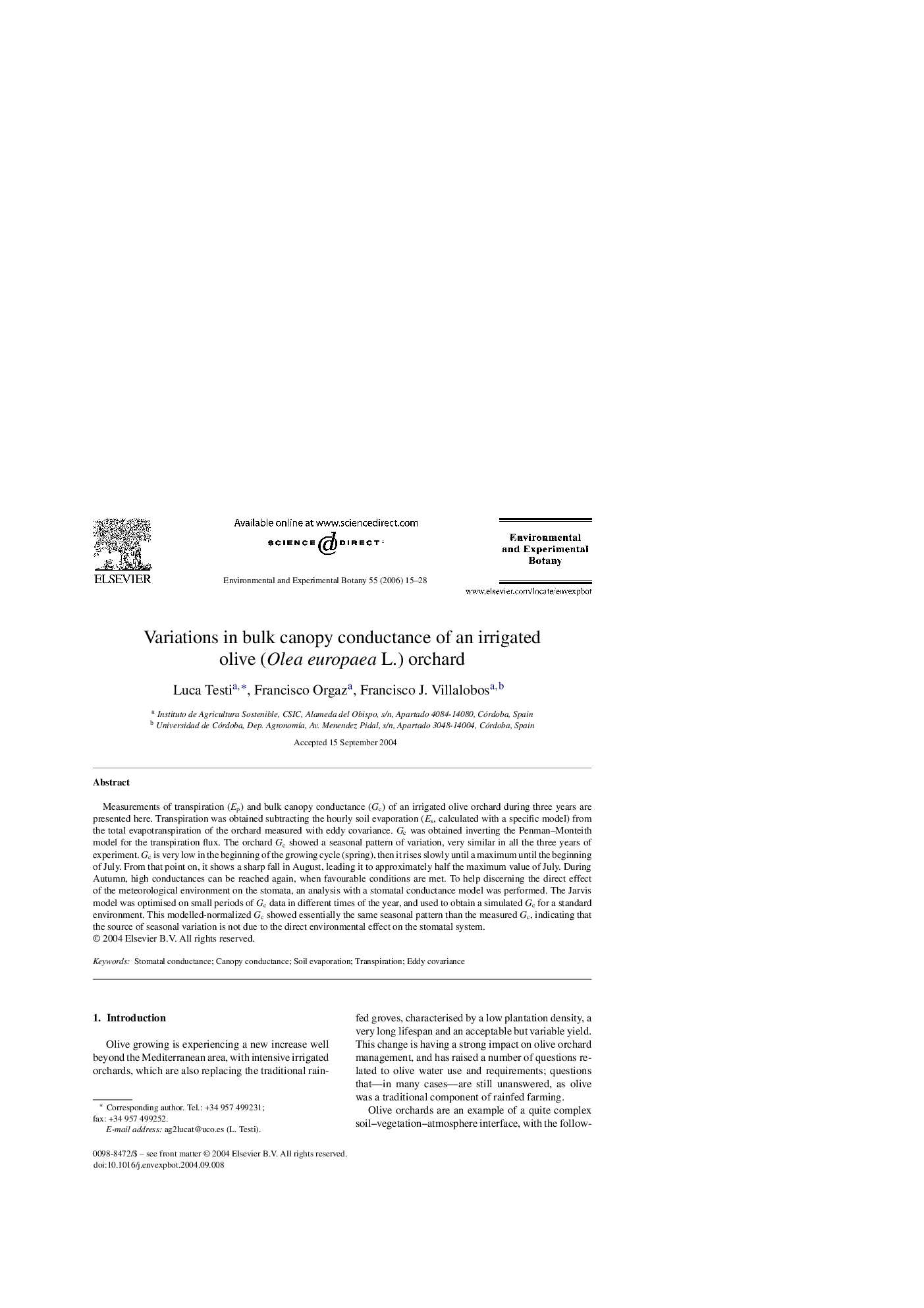| کد مقاله | کد نشریه | سال انتشار | مقاله انگلیسی | نسخه تمام متن |
|---|---|---|---|---|
| 4555731 | 1628111 | 2006 | 14 صفحه PDF | دانلود رایگان |

Measurements of transpiration (Ep) and bulk canopy conductance (Gc) of an irrigated olive orchard during three years are presented here. Transpiration was obtained subtracting the hourly soil evaporation (Es, calculated with a specific model) from the total evapotranspiration of the orchard measured with eddy covariance. Gc was obtained inverting the Penman–Monteith model for the transpiration flux. The orchard Gc showed a seasonal pattern of variation, very similar in all the three years of experiment. Gc is very low in the beginning of the growing cycle (spring), then it rises slowly until a maximum until the beginning of July. From that point on, it shows a sharp fall in August, leading it to approximately half the maximum value of July. During Autumn, high conductances can be reached again, when favourable conditions are met. To help discerning the direct effect of the meteorological environment on the stomata, an analysis with a stomatal conductance model was performed. The Jarvis model was optimised on small periods of Gc data in different times of the year, and used to obtain a simulated Gc for a standard environment. This modelled-normalized Gc showed essentially the same seasonal pattern than the measured Gc, indicating that the source of seasonal variation is not due to the direct environmental effect on the stomatal system.
Journal: Environmental and Experimental Botany - Volume 55, Issues 1–2, January 2006, Pages 15–28